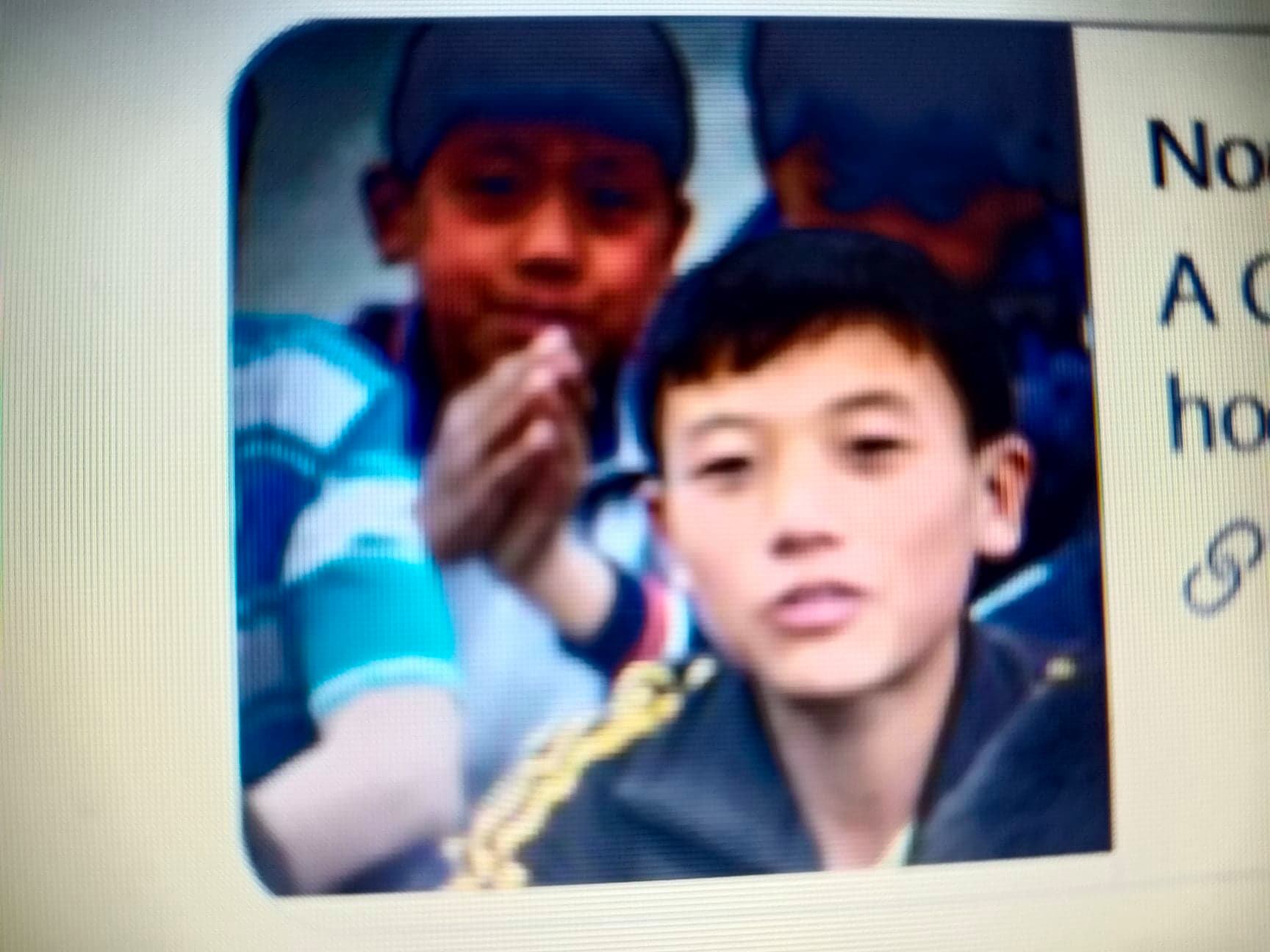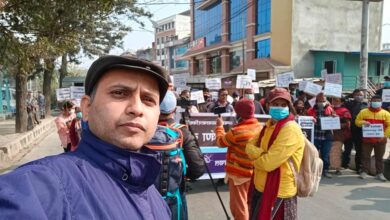The Making of the Gorkha Empire: Part II – The Ruling Class
January 13-
This is the second installment from our series of essays on the Gorkha Empire. Also read the first and third essays from the series
https://www.recordnepal.com/author/amishmulmi/
“The king’s storehouse is his people. Whether a man be selected as a soldier or as a courtier, let him not acquire wealth. Give a man only honour, and that according to his worth. Why? I will tell you. If a rich man enters into battle, he cannot die well; nor can he kill. In a poor man there is spark. If my brother soldiers and the courtiers are not given to pleasure, my sword can strike in all directions.”
(From Prithvi Narayan Shah’s Dibya Upadesh)
The Gorkha Empire’s transition from a humble hill principality to a Himalayan empire was undertaken in an unimaginably short period of time – seven decades, to be precise. Within this period, the Gorkhas had overrun the Newars of the Valley, the Sens of Palpa, the chogyal of Sikkim, and the Chand kings of Kumaon. In Kings and Political Leaders, historian Mahesh Chandra Regmi writes that at the time of Prithvi Narayan Shah’s death in 1775, “the Gorkhali Kingdom comprised the whole of the eastern Tarai, central inner-Tarai (Sindhuli, Udayapur, Chisapani, and Makwanpur), Kathmandu Valley, the eastern hill region up to the Tista river… and the western hill areas of Nuwakot and Dhading… The principality of Jajarkot… had signed a treaty accepting Gorkha’s suzerainty in January 1769, a few months after the conquest of Kathmandu.”
It can be reasonably assumed that after their first few victories, the Gorkhalis grew in self-confidence and realized their military strength was sufficient to overpower the remaining hill countries. They had also won a victory over the Company forces led by Captain Kinloch during his ill-fated rescue expedition of 1767, where Prithvi Narayan Shah “defeated him also and took his flintlocks,” a rare weapon in the hills. Eventually, the Gorkhas would make their own rifles. One deserting Englishman, who “cast cannon in Kathmandu,” even became a full colonel of the artillery.
The baise and chaubise states had been acquired by the empire by 1789. But the Gorkhalis, under Rana Bahadur Shah, the grandson of Prithvi Narayan, had their sights on the lands beyond the Mahakali river. According to Regmi, “In early 1790, Gorkhali troops crossed the Mahakali river, invaded the state of Kumaun and occupied it within less than two months. Without wasting time, they continued westward towards Garhwal,” which became a vassal state after a year-long siege. Its expansion into the north was halted by a war with Tibet and China, until both sides sued for peace in 1792. Its 1804 annexation of Garhwal despite their earlier alliance, and the question of where the new border lay, eventually brought the empire into war with the Company, resulting in the Sugauli treaty.
Following Prithvi Narayan Shah’s dictum, the Gorkhas had founded a military empire, a self-perpetuating war machine that relied on constant supply of reinforcements and resources to its troops through the hulak system, a track connecting Kathmandu to the front via Pokhara, Pyuthan, Salyan, Doti and Almora. Using forced, and unpaid, labor known as jhara and rakam, the hulak delivered official mail and military supplies from Kathmandu to Almora, with permanent posts set up at “intervals of approximately 3 km.” This system, flawed as it was, formed the basis of Gorkha’s military campaigns. As Regmi describes in Imperial Gorkha, “In January 1806, a single consignment of arms and ammunition sent from Kathmandu to the front [in Garhwal] was comprised of 500 cannon balls, 24,000 shots, and 4,000 flints, in addition to large quantities of steel and gunpowder.” Unpaid labor wasn’t just used for military campaigns though; its enforcement made it possible “for the royal palace to obtain a regular supply of mangoes from the Tarai, and of ice in the summer months from the hill areas around Kathmandu Valley.”
The Sugauli treaty put an end to the territorial ambitions of the Gorkhas, trapping them within their own kingdom, a rectangular strip of land surrounded on all four sides by nations more powerful than its own. The Kathmandu Durbar had two choices once the treaty came into force: it could consolidate its empire by creating a suitable administration to govern the lands it had conquered, or it could indulge in palace intrigues. Maybe the Gorkhas had become too placid, or its generals were tired of war. The durbar had certainly acquired enough wealth to indulge in the sort of luxuries explicitly forbidden by Prithvi Narayan, such as when “members of the royal family seem to have started dining off gold plates – Rs. 6,800 were spent on gold for this purpose in August 1794.” The riches trickled down to the bhardars too. In a fascinating historical brief on the economics of the bhardar families, Regmi writes:
Bhimsen Thapa was almost penniless when he returned from exile in India to Kathmandu along with Ran Bahadur Shah in March 1804… Sixteen years later, in July 1820, [Bhimsen Thapa and his brothers] subdivided their common property among themselves. Their collective holdings comprised agricultural lands and residential sites totalling approximately 1,450 ropanis and several houses in Kathmandu, including a new one built by Bhimsen Thapa, as well as houses in Gorkha and Nuwakot. Lands and houses in Palpa, obviously built by their father, Amar Simha Thapa, and lands at Khinchet in Nuwakot, and in the Tarai, were left undivided, while Bhimsen Thapa retained for himself his newly-built palace at Lagan, for which King Girban had granted him lands in 1813-14. His share of the family property included another palace in Kathmandu and a house in Nuwakot, for which King Girban had granted additional lands.
What is certain is that in Kathmandu – the “cold stone” that was “great only in intrigue,” as Prithvi Narayan Shah put it – the Durbar indulged in the same intrigues. Prithvi Narayan wanted to move the capital to Dahachowk, on the western rim of the Valley, but his wishes were not respected.
After 1816, with the army seeking some purpose, Bhimsen Thapa used the Gorkha military as a political tool. After all, what use is an army if there are no more wars to fight? The specter of the British was there for the taking, even though, as Ludwig Stiller writes, “Neither the governor general [of the East India Company] nor…China showed any indications that they had designs on Nepal that included an invasion of this country.”
The rise of Bhimsen Thapa from being a member of King Rana Bahadur Shah’s coterie during his exile in Varanasi to the position of mukhtiyar – equivalent to a modern prime minister – is as intriguing as the political games he played to retain his tenuous hold on power during the post-Treaty years, when his stock was at its lowest. Yet, with an adolescent Girvan Yuddha as the king in Kathmandu Durbar, Bhimsen Thapa managed to rally the military around him.
Stiller makes it clear that there were little to no cutbacks to the officer class after the treaty, even though there were no new lands left to conquer. In fact, the size of the military increased after the war. By the time Bhimsen Thapa fell out of favor, the standing army numbered around 18,000, compared to 10,000 in 1816. This was because:
[Bhimsen Thapa] was not so secure in his position [after the war] that he could survive without support… It was the jagirdar class that he required for support. Since there was practically no civil service, the jagirdar class was essentially the army officer corps. Bhimsen Thapa needed the military establishment far more than Nepal did, and this had two consequences that continued to impoverish the nation. The farmers of village Nepal had to continue to finance a large army with its officer corps, who had no function commensurate with the cost of their maintenance. Secondly, Bhimsen Thapa’s preoccupation with the army prevented him from throwing his energies into the development of a civil service that would have served the needs of village Nepal.What now emerged was a political-military complex that enabled the rise of the sort of intrigues that would eventually bring to power someone like Jung Bahadur. At a time when the empire needed to be consolidated, the whirlpool of power-grabbing and sycophancy that marked the post-Treaty years would lead Jung Bahadur into creating a hereditary system of premiership limited to the Rana family. The landholding patterns remained unchanged for the most part even after the Ranas developed what can be termed a rudimentary civic administration, with rajas, birta-owners and jagirdars continuing to, Regmi writes, “occupy the role of parasitic landlords whose income from rents was available neither for investment in agricultural development nor for mobilization of tax revenues of the state.”
This political-military complex was maintained by land grants, and to continue their ownership of the lands through the pajani, the bhardars needed to play the rights cards. The fact that most of the jagirs or birtas were outside Kathmandu, mostly in the Terai, did not matter, for the peasants tilling their land would deliver the required produce and revenue.
Further, even before the Sugauli Treaty, the Gorkha Empire was not notable for its rule over the new colonies. Peasants in Kumaon regularly deserted their fields and left the Gorkha territory. “The Gorkhali rule in Kumaon,” Regmi writes, “was congenitally marked by such malpractices as ‘extraction, torture, abduction and rape of the wives, daughters and daughters-in-law of the people, collection of unwarranted payments, fines and penalties, forcible appropriation of property, and enslavement.’” Kumaon was a frontier state, and was used as one. Regmi adds, “Kumaon was a means towards the fulfilment of their imperial ambitions. [Its] people were needed only because they could be used as a base for further imperial conquests and a source of economic and manpower resources.”
It is likely that similar malpractices existed in other parts of the empire, and continued to do so even after the loss of Kumaon, for no widescale civic or governance reforms were undertaken. This was as much due to the oversight of local officials as due to the Gorkhali political elite, “which remained virtually closed to all but the traditional families of Gorkha who had accompanied Prithvi Narayan Shah to Kathmandu.”
A war state exists only as long as there are battles to fight. If there are no wars, the military class becomes a massive burden to a population already impoverished by them. Also recall that this was a time when the Nepali economy was sustained almost entirely by its produce from land, with very little trade to buffer the resources. Further, when the military class is directly related to the ruling class via family or caste relationships, the incentive-driven war machine of the past turns into an ossified bed of intrigue. Prithvi Narayan Shah’s orthodox recommendation that the empire choose its fighters and bhardars only from a handful castes came to haunt the Gorkhas, and continues to cast a shadow over present-day Nepal. In an empire made of chattis jaat as acknowledged by Prithvi Narayan Shah himself, a blinding, almost radicalized, devotion to the Hindu Khas-Arya code enabled the emergence of a ruling class made exclusively of a few families. Unsurprisingly, such centralization of power had a domino effect on the entire empire.
This is the second installment from our series of essays on the Gorkha Empire. Also read the first and third essays from the series.
Cover photo: “King Girvan Yuddhavikram Shah (1797-1816)”, Los Angeles County Museum of Art (LACMA).
https://www.recordnepal.com/wire/features/the-making-of-the-gorkha-empire-part-ii-the-ruling-class/

